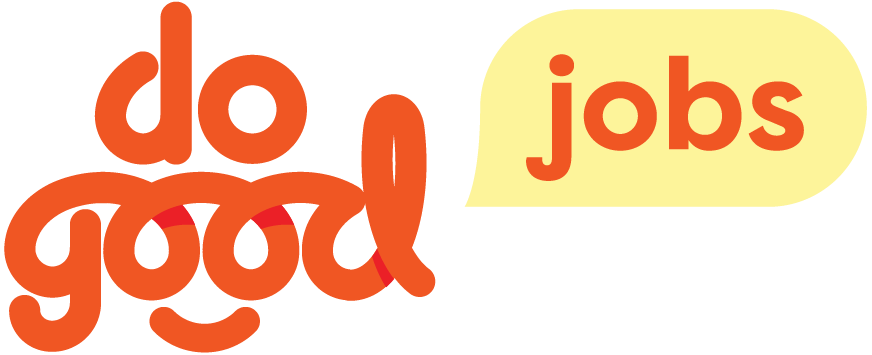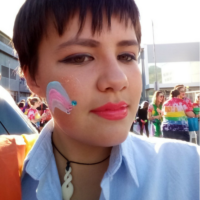Diversity steers this ship: how to join a not-for-profit board & why you should
Contrary to what we often see in films and on TV, board members aren’t always suit-clad white, older men. We know that diversity leads to greater strength, and resilience, so it’s not surprising that not-for-profit boards are often made up of diverse ethnicities, genders and ages.
A not-for-profit board makes sure an organisation has a clear vision and is working to achieve that vision. Put simply: board members steer the ship!
Today, we’re delighted to profile four diverse board members creating a better world in Aotearoa. Each board member shares how they got involved, what they actually do, and why YOU should consider joining a not-for-profit board. Read on and get inspired!
Anchali Thevananthini Anandanayagam
Board member of Thankyou Payroll, Asylum Seekers Support Trust - a division of Auckland Refugee Council and Women in Film and Television NZ (WIFT NZ), 40 years old.
Cut your teeth on something small and community focused
Occupation and interests: Technology, Media and Telco Lawyer, humans, food, good wine.
How did you first become a board member?
A colleague asked me to take his place on the board of an organisation our law firm sponsors. After that, I joined the Asylum Seekers Support Trust board – purely to give back. We came to NZ as refugees and I wanted to do something meaningful with my skill set that acknowledged the support and help we received when we first came to NZ.
What do you do as a board member?
For WIFT NZ, I am the Treasurer. For the Asylum Seekers Support Trust, I am the Vice Chair. In all of my board positions, I leverage my risk mitigation skills to help navigate each organisation in a sustainable way. One of my biggest contributions (at least to my voluntary boards) is to show up at meetings and be actively involved in the organisation, which is something voluntary boards really struggle with.
What advice would you give to someone who wants to join a not-for-profit board?
Cut your teeth on something small and community focused, like your kindergarten board or committee. But always remember that being a member of any board, whether voluntary, not for profit or otherwise, carries legal obligations. So before you step in, do your homework.. Ensure the people you will be working with and the systems and processes they have in place don’t put you at risk. You can ask to sit in on a board meeting before you join and ask about what protections they have in place for board members, such as D&O insurance.
Seumas Fantham
Board member of Philanthropy New Zealand, Te Muka Rau, and Miramar and Maupuia Community Centre. Member of the Māori Advisory Committee for Philanthropy New Zealand. 40 years old.
A diverse voice at the governance table brings a different perspective, creativity and fresh ideas
Occupation and interests: I work for a philanthropic funder and have an interest in community work.
Why did you first become a board member?
Often a lot of what happens in communities start as conversations at local governance tables. I think it is important to have a diverse voice at the governance table as this brings a different perspective, creativity and fresh ideas. Some of the key people that I have learnt from include Sir John Todd, Helen Kelly, Kate Frykberg and Marama Takao. Their leadership skills, wisdom and ability to keep an eye on values as well as stewardship has taught me a lot about governance.
What do you do as a board member?
You are accountable for the decisions that are made, and although you do not need to be an expert on all of the key areas at the board table, you do need to have enough knowledge to contribute towards robust conversations and ensure you are aware of what you are agreeing to. I also believe it’s important to know the boundaries of good governance, and to respect the differing roles between governance and management or operations.
What advice would you give to someone who wants to be a board member?
You often have more experience than you realise. For example, if you are a resident in the community and are aware of key issues or opportunities in your own community, then your voice at the governance table is likely to be of value. I think both skills and experience are valuable to have in governance, but also the unique lens (perspective) that you bring to conversations is equally important.
Jaye Barclay
Chairperson of InsideOUT, 20 years old, Takatāpui, mixed NZ European, Māori, Japanese and Ukranian.
My greatest skill was my enthusiasm and willingness to lend a hand
Occupation and interests: studying Ecology and Biodiversity, Marine Biology, English literature, and Māori Studies, passionate about Te reo Māori and activism, loves to read and draw..
How did you become a board member?
I was inspired to get more involved with the LGBT+ community when I met InsideOUT founder Tabby Besley in my last year of high school. I became an InsideOUT volunteer after leaving high school, and after six months of volunteering, Tabby asked me if I wanted to join the board. I went to a board meeting that June and was formally accepted, and then followed the induction protocols surrounding brushing up on our policies and becoming familiar with board protocol. From there, the rest is history.
What do you do as a board member?
As chairperson my role is pretty management based. I facilitate board meetings and I’m very involved with the recruitment of new board members, including conducting interviews and inductions. I have a hand in managing the board itself and making decisions about policy, events, and communicating with outside organisations or individuals alongside the National Coordinator. I also voluntarily donate my art to resources and events, and I’m very involved with InsideOUT’s education and consultancy program.
What advice would you give to someone who wants to join a board?
It’s never too late to start making a change, even if you start small. I started off as a volunteer fresh out of high-school and my greatest skill was my enthusiasm and willingness to lend a hand, and sometimes that’s all that’s required to get stuck in. If you start out by helping out wherever possible, you will develop the skills required for higher positions and grow as a person and as a leader. If you already have experience, you won’t know if you’re ready if you don’t try!
Lani Evans
Board member of Thank you Payroll, Thankyou Charitable Trust and Peter Mckenzie Project. Under 40.
Everyone has skills and experiences to bring to the board room
Occupation and interests: Philanthropy, social business, advocacy, adventure, community and generosity.
How did you first become a board member?
I was shoulder-tapped for my first role. It was on the board of a tiny charity start-up in Dunedin called RAVE (Respect and Value Everyone). We ran workshops with young people on communication styles, positive relationships, de-escalation and reflective practice. It was a very hands-on position and I joined because I was passionate about the work, curious about governance and absolutely inspired by the founder.
What do you do as a board member?
The boards role is to bring the mission to life. Board members set the strategy and vision of the organisation – we point the lights in the direction of travel, while the CEO rides the bicycle. We are responsible for managing risks, developing policies, setting the ethical framework and meeting fiduciary responsibilities. There are a lot of components to the work, but fundamentally, it’s our job to be kaitiaki, to support the CEO and to ensure the organisation flourishes.
What advice would you give to someone who wants to join a board?
Everyone has skills and experiences to bring to the boardroom, but before I jump in to a board role, I ask myself three questions. If I can answer yes to these questions, and I’m willing to commit wholeheartedly, then I think I can add value. We’re all learning together and I believe that curiosity and diversity are key to organisational success. The questions are:
Do I bring a unique perspective or worldview?
Do I understand the challenges the organisation is facing?
Am I willing to listen, learn and contribute?
I don’t know about you, but I’m feeling pretty inspired by these four board members.
If you’re keen to find out more about joining a not-for-profit board, you could start with these two steps:
Profile photos kindly provided by our interviewees.




